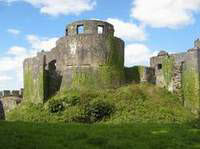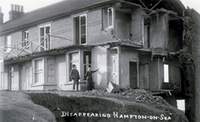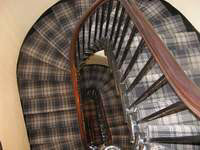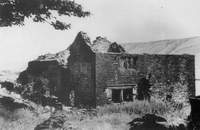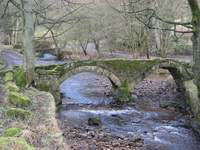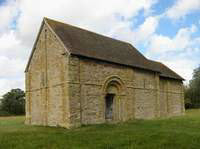In the Tywi Valley the castles at Dinefwr and Dryslwyn lost their military significance in the fifteenth century. The castles and the small towns associated with them were abandoned.
Hampton-
The village of Grahamston was annexed by Glasgow in 1830. Then in 1875 most of it was demolished to make way for Glasgow Central Station.
Haslingden Grane in Lancashire was a centre for farming, the textile industry, quarrying, and whisky distilling. By the 1920s a string of reservoirs caused nearly everyone to move away.
Early in the nineteenth century the village of Wycoller was a centre for home weaving. But as home weaving died out residents left the village and it became almost deserted.
Near Rochdale reservoirs were built at Cowm, Watergrove, and Greenbooth between 1877 and 1963. Farms, textile mills, and villages in the valleys had to be abandoned.
The mill at Tide Mills was closed in 1883, but the village close to it survived until 1940, when the remaining buildings were demolished for defensive purposes.
The village of Lowfield Heath developed in the eighteenth century as it was on the London to Brighton road. It came to an end after the development of Gatwck airport.
In southern Shropshire several small medieval villages were gradually abandoned as people reacted to climate change, disease among cattle, and a trend towards scattered farms.

